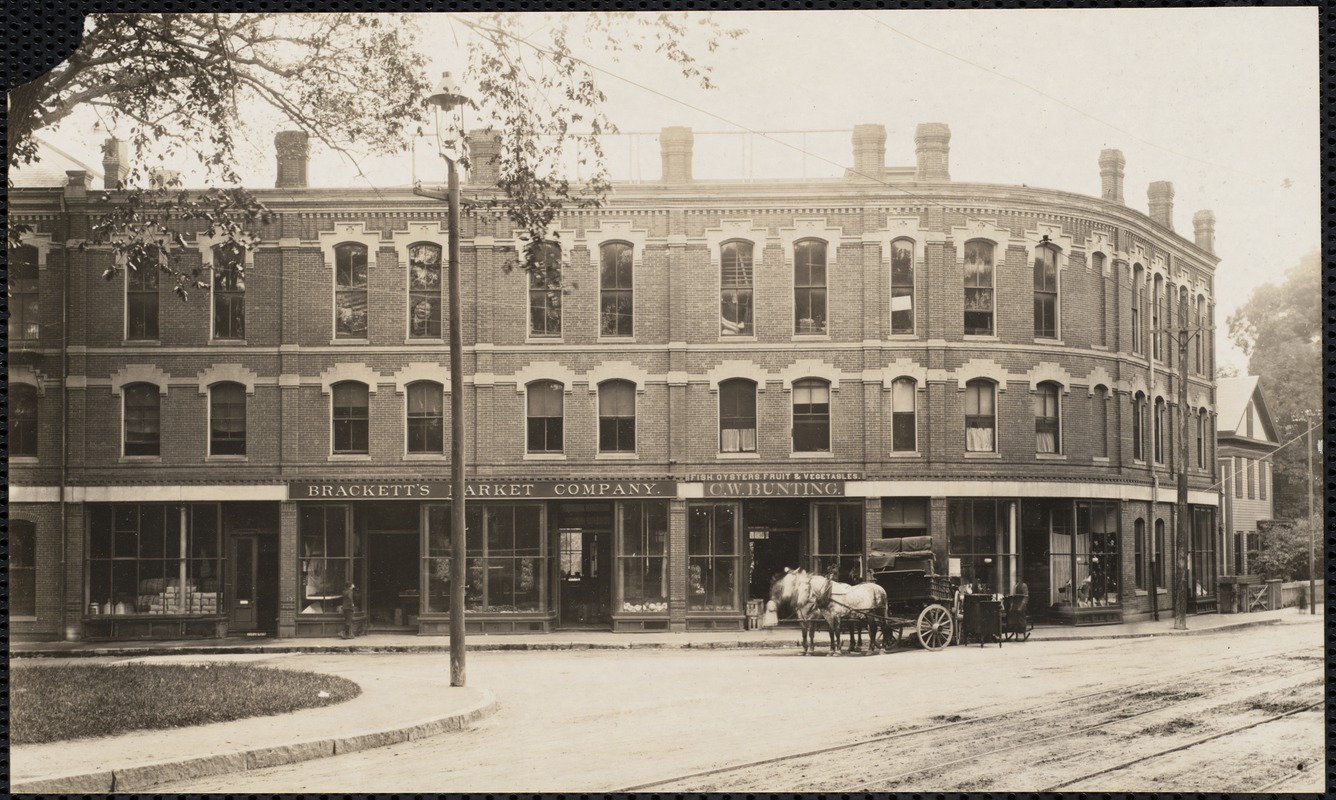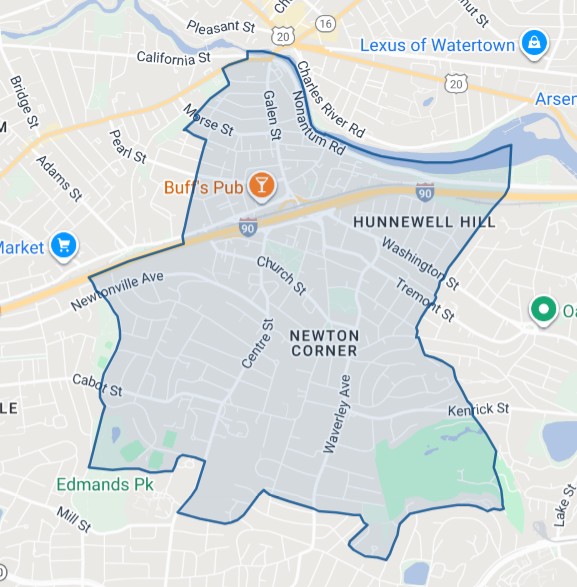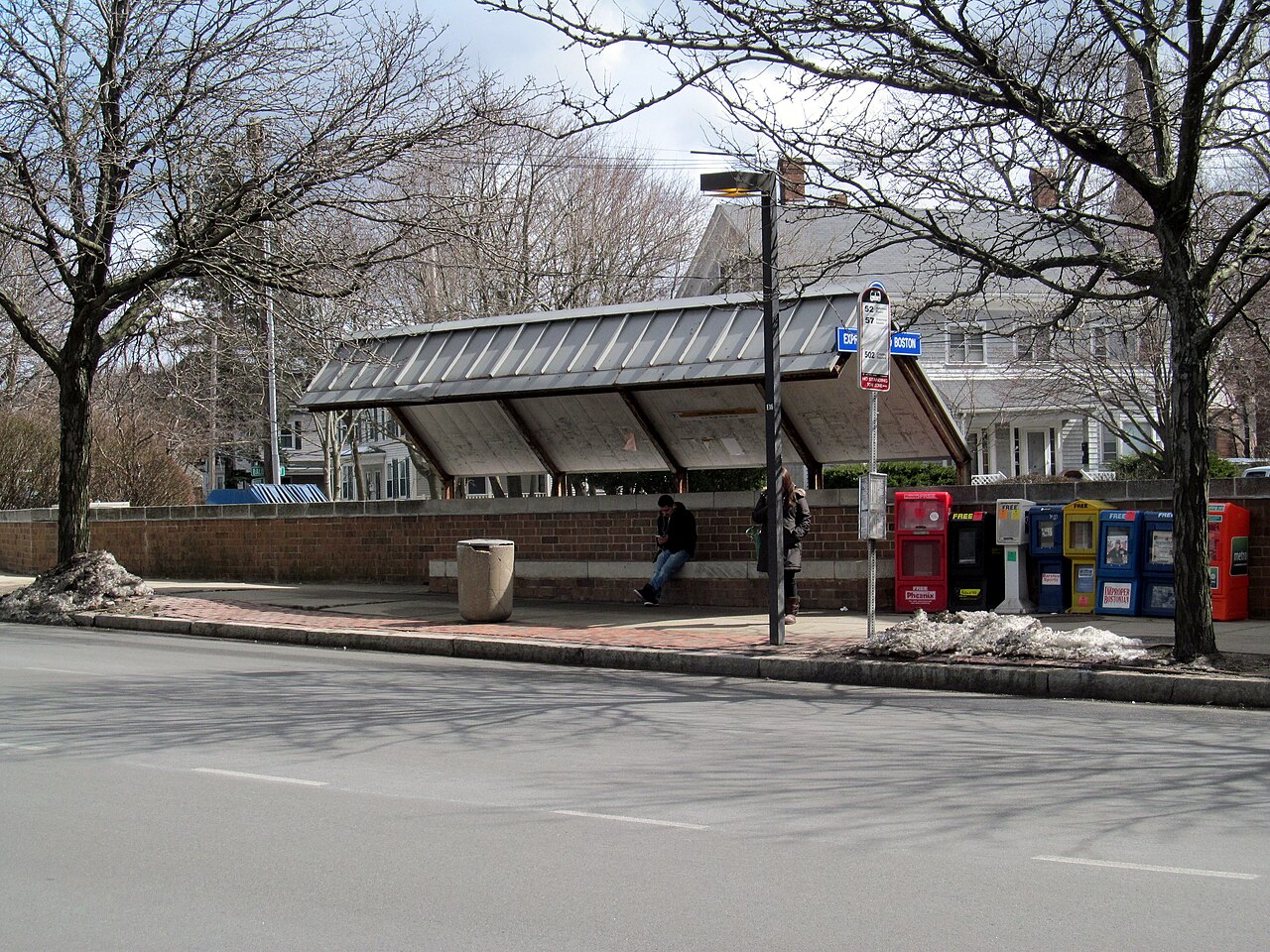Brief History
Newton Corner is the earliest settled villages of the city of Newton, starting as farm land. According to the city’s historic-Newton resource, the area was settled as part of Cambridge’s farming outpost in the 1630s.
The village grew up around the intersection of Washington Street and Centre Street, serving farms and travelers on the route into Boston. In 1834 the railroad (Boston & Worcester Railroad) reached the area, sparking suburban-style growth.
In the 1960s the construction of the Massachusetts Turnpike (I-90) and the large rotary interchange (Exit 127) significantly altered the village centre: many businesses and homes were removed, and the Turnpike effectively split the village.
Thus Newton Corner carries a layered past: colonial farms → 19th-century commuter village → mid-20th-century infrastructure transformation.

Village Character & Lifestyle
Newton Corner offers a blend of historic charm, transit‐adjacency, and village-scale amenities. The architecture includes Victorian-era homes (Queen Anne, Italianate) in older parts of the village, reflecting the late-19th/early-20th-century boom.
The village center along Washington Street features restaurants, shops, cafés, and walkable destinations—though the Turnpike’s presence means that the character is less “storybook village” and more “urban-adjacent suburb with strong commuter orientation.” For many buyers this is a plus: convenience + village flavor.
Lifestyle highlights:
Very good access to Boston and major roadways.
A diversity of housing types: smaller lots, multi-family zoning in parts, vintage homes, mid-century infill.
Community parks and trails, plus social amenities like the West Suburban YMCA and other recreation options.
Schools & Community
Students in Newton Corner attend either Lincoln-Eliot or Bigelow Elementary Schools, Bigelow Middle School and Newton North High School. A private school – Newton Country Day School is nearby on Centre St.
Newton Corner has it’s own Neighborhood Association that strives to build community through zoom call meetings and community events.
Location & Commute

Newton Corner’s location is a major strength: about 6 miles west of downtown Boston and borders Brighton, a neighborhood of Boston, as well as the city of Watertown, Massachusetts. Newton Corner is divided by the Massachusetts Turnpike (I-90) with on-off access in both directions at Exit 127 (formerly exit 17) via a large, complicated roundabout nicknamed the “Newton Supercollider”[1] and the “Circle of Death”.[2]
Newton Corner station formerly saw streetcar and commuter rail service; it now serves as a busy bus depot serving downtown express routes (550 series) as well as local buses.

Access to the Massachusetts Turnpike (I-90) via Exit 127, meaning fast highway access.
Good bus service into Boston (the former commuter‐rail and streetcar infrastructure has given way to bus terminals at the rotary).
If you are super fit, it is possible to ride your bike from here to Boston or Cambridge along Washington St to River St. About a 5 mile ride.
Parks & Sites of Interest
Farlow Park, and Kenrick Park the community’s first park listed on the National Historic Register, is a 5-acre facility with a footbridge, toddler area and athletic fields. Burr Park offers a baseball field and a recreation building with game rooms. Eliot Memorial Park and Charlesbank Park are smaller spaces that offer peaceful escapes from the daily routine.
Newton Community Golf Course, a public 18-hole course, is in the village’s southeastern corner, abutting Brighton, and includes water and sand bunkers.
Many residents spend summer evenings and weekends at the Newton Yacht Club on the banks of the Charles River. The club, which requires membership, hosts annual events and leads boating safety courses.
Daly Rink, an indoor ice-skating facility, resurfaces the ice every hour. The rink is available for birthday parties, public skating times and can also be rented for private use.
Edmands Park: A wooded hilltop park in Newtonville, on the edge of Newton Corner is popular for walks and sledding in winter.
Awtrey Dell – a small, walkable green space accessible via a path at the end of Sargent Park.
Jackson Homestead (527 Washington Street): Historic house and museum, formerly a station on the Underground Railroad.
Demographics & Income
Because Newton Corner shares a zip code with Nonantum (02458) it is not possible to get specific demographic information for just this neighborhood.
The village is split by the Mass Pike. On the South side of the Pike there is a neighborhood of grand homes. The village includes a mix of housing styles and affordability levels relative to Newton’s highest-end villages.
Housing Market & Home Ownership

Key pointers:
The market includes older homes (Victorian, early 20th-century) as well as mid-century and multi-family conversions. That variety is appealing. One neighborhood of Newton Corner boasts the largest, most expensive homes in Newton along Sargent St and that general area. Closer to the Mass Pike, the homes are more modest, having been built by railway workers and shop owners along Washington St.
Because of the Turnpike and rotary, the village center has changed dramatically; some homes are closer to transit/road noise so condition and location matter.
Condition, lot, noise exposure (due to road infrastructure) and maintaining historic properties are considerations.
Average Home Value – $1,601,956
What This Means for Buyers & Sellers
For Buyers:
You’re getting major upside: excellent location, transit access, village amenities, strong school district. One of the most affluent neighborhoods of Newton is within Newton Corner and the homes here are spectacular. This area appeals to Corporate executives.
Be aware of trade-offs: some neighborhoods and homes have proximity to major roads/rotary may affect noise; older homes may need updates; smaller lots in some parts.
Because of variety in housing stock, there may be value opportunities (versus the most expensive Newton villages) — but still expect competition.
For Sellers:
Highlight your strengths: transit & highway access, walkable village center, historic homes, strong school district.
Pricing must reflect location “sweet-spots” (away from heavy traffic) and condition. Use comparables carefully because proximity to road/rotary may impact value.
In Summary
Newton Corner offers a very compelling package: historic village roots, walking amenities, very strong connectivity to Boston and the region, and a variety of home styles and price points. For buyers who want location + lifestyle + commute ease it’s a strong pick; for sellers it remains a fruitful zone of demand — albeit with careful positioning required given its infrastructure context.
Related Links
Newton Corner Neighborhood Association
Newton Corner shares a zip code (02458) with Nonantum so it is not possible to separate listings bewteen these villages.
Here is a list of streets in Newton Corner to help you differentiate:
Aldrich Rd
Arlington St
Avon Place
Bacon Street
Baldwin Street
Beechcroft Rd
Boyd St
Brackett Rd
Part of Cabot St
Carleton Street
Colby Rd
Part of Centre Street
Channing Street
Charlesbank Road
Church St
Claremont St
Crescent Square
Eldredge Street
Elmwood Street
Emerson Street
Fairmont Ave
Farlow Rd
Franklin St
Green Park
Gordon Terrace
Hermon Terrace
Hunnewell Ave
Hyde Ave
Jefferson Street
Kenilworth Rd
Kenrick St
Langdon St
Lewis St
Lombard St
Maple St
Montrose St
Morse St
Part of Newtonville Ave
Nonantum Place
Orchard Street
Park Street
Peabody Street
Playstead Rd
Richardson Street
Ruthven Rd
Saint James Street
Salisbury Rd
Sargent St
Summit St
Thornton Place
Thorton Street
Tremont St
Union St
Vernon Street
Part of Washington Street
Water St
Part of Waverley Ave
Westchester Rd
Whitmore Rd
This content is currently unavailable. Please check back later or contact the site's support team for more information.
